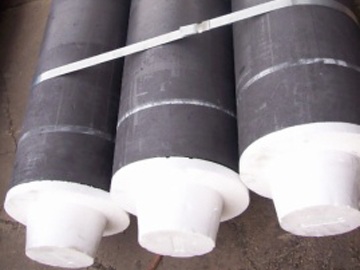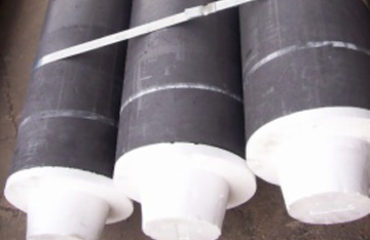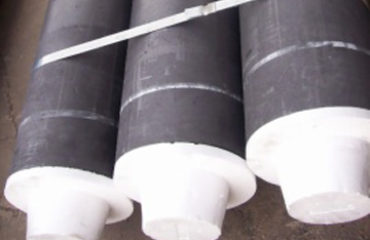
Ultra-high power graphite electrode colloidal graphite is mainly used in lubrication, conductivity, sealing and other fields. Different types and types of colloidal graphite are needed in different industrial production fields. There are many kinds of colloidal graphite. Colloidal graphite includes 00 colloidal graphite, 0 colloidal graphite, 1 colloidal graphite and so on. Colloidal graphite lubrication is mainly used in metallurgical demoulding and moistening. Lubricating oil, grease production, paint production and other industrial fields.
Colloidal graphite lubricant can be used as demoulding lubricant in catalyst production in fertilizer industry. Colloidal graphite is used as demoulding agent in powder metallurgy. The addition of colloidal graphite to the production of lubricating oil and grease can improve the lubricity and high temperature resistance of lubricating oil and grease. Colloidal graphite can also be used as additive in rubber and plastic products. The use of colloidal graphite can also improve the wear resistance, compressive resistance and electrical conductivity of rubber and plastic products. In the industrial production of storage battery, colloidal graphite can be used as carbon film resistance and conductive coating for the production of storage battery. The use of colloidal graphite lubrication plays a role of lubrication and wear resistance in the field of industrial lubrication production.
Colloidal graphite is used in various industrial fields and plays its due role in various industrial production fields. The lubrication use of colloidal graphite plays an important role in the production of industrial lubricating materials. The lubrication use of colloidal graphite makes industrial products lubricate, wear-resistant and prolongs the service life of products. Colloidal graphite has been well applied in metallurgy, lubrication, conductivity and other fields. Mohism has promoted the development of industry and played an irreplaceable role.
Graphite crucible has the characteristics of high volume density, high temperature resistance, fast heat transfer, acid and alkali corrosion resistance, high temperature strength and high oxidation resistance, so it is unavoidable to be used to prevent corrosive substances in the use process. Although graphite crucible has the ability to resist acid and alkali, it is very difficult to clean up the crucible after it is used for the refining of individual raw materials.
For those cleaning materials, boil in dilute hydrochloric acid or nitric acid. Note that the hydrochloric acid used should not contain nitric acid, nitrate, halogen and other oxidants. If dilute nitric acid can not be washed, then use potassium pyrosulfate, sodium carbonate or borax fusion cleaning.
The primary task of cleaning graphite crucible is to clean out the chemical substances in the crucible and then clean it. We need to decide what to clean according to what the residual substances in the graphite crucible are. Generally, the adhesives on the graphite crucible are the residues of inorganic combustion. We can use hydrochloric acid to clean up, most of them are soluble, some contain. Carbon residues, which cannot be dissolved by hydrochloric acid, can be cleaned with nitric acid, because nitric acid is highly oxidizing and can be heated appropriately during cleaning.
Graphite crucibles need to be kept clean, bright inside and outside. After a long time of burning, the crucible may be gloomy in appearance, and it will penetrate into the interior of the crucible for a long time, which will cause the crucible to fragile rupture, so it must be clear what is unclean. If there are still five points or the surface is black, then use fine sand without sharp edges and corners through 100 sieves to rub gently with water to restore the gloss of the surface.


